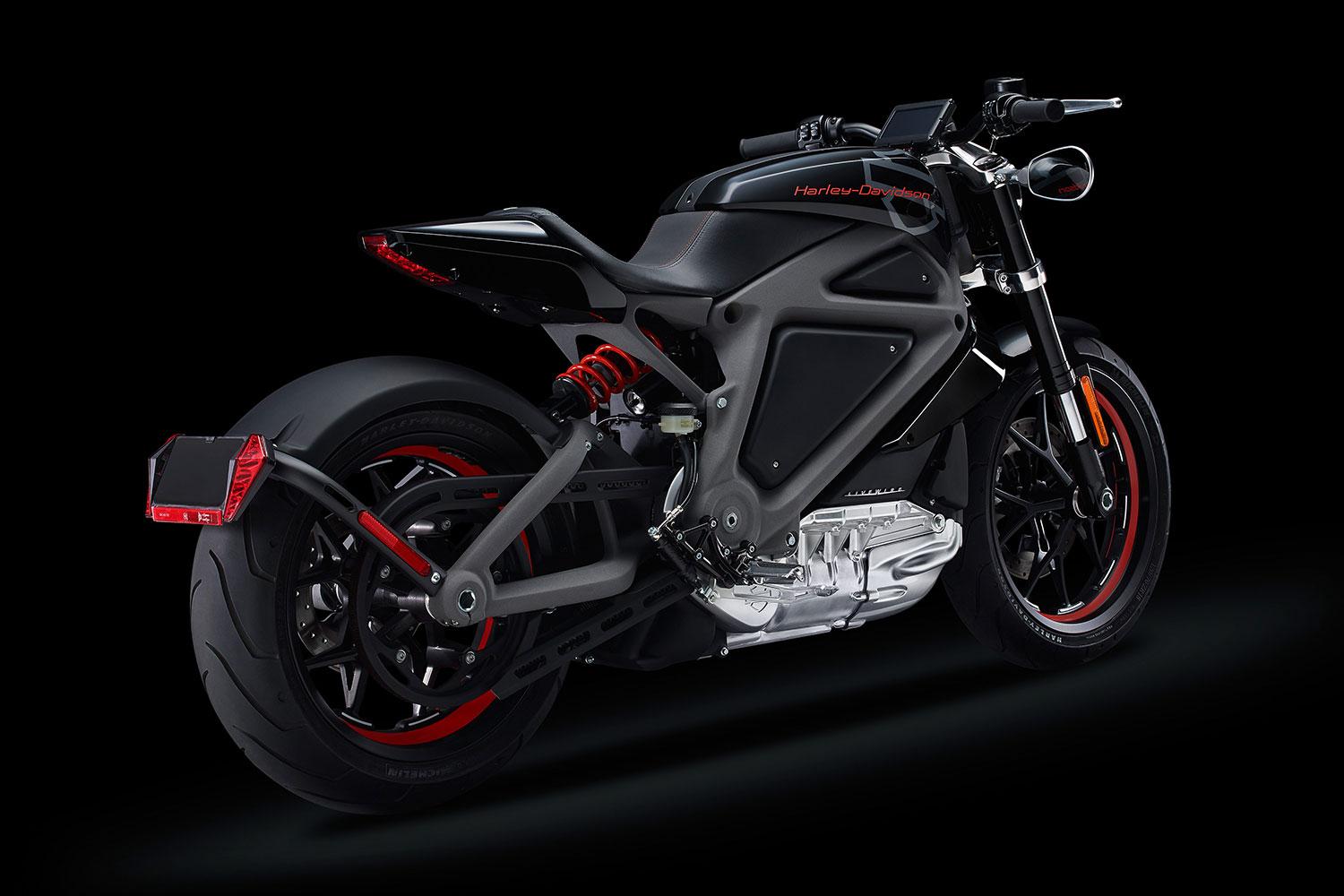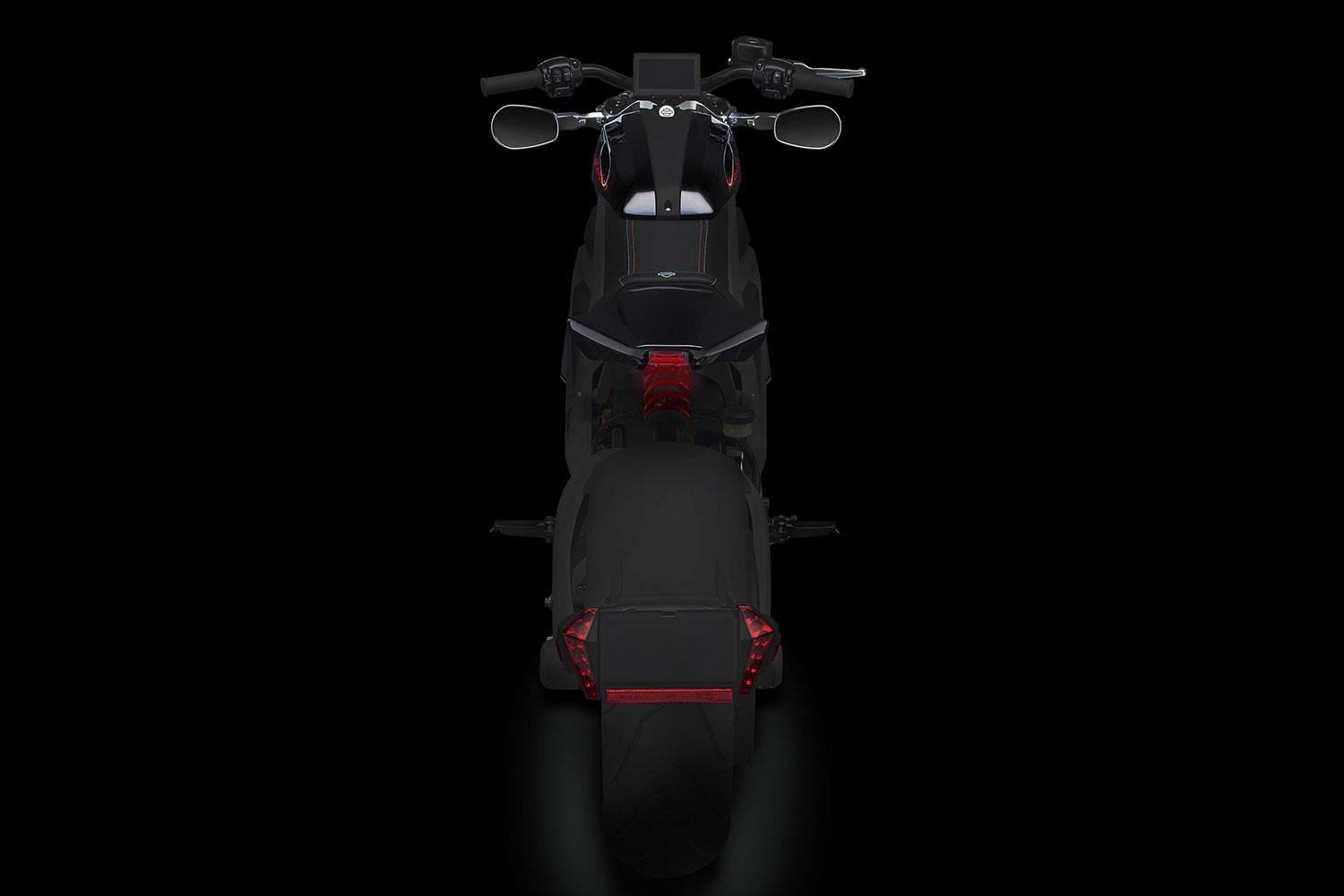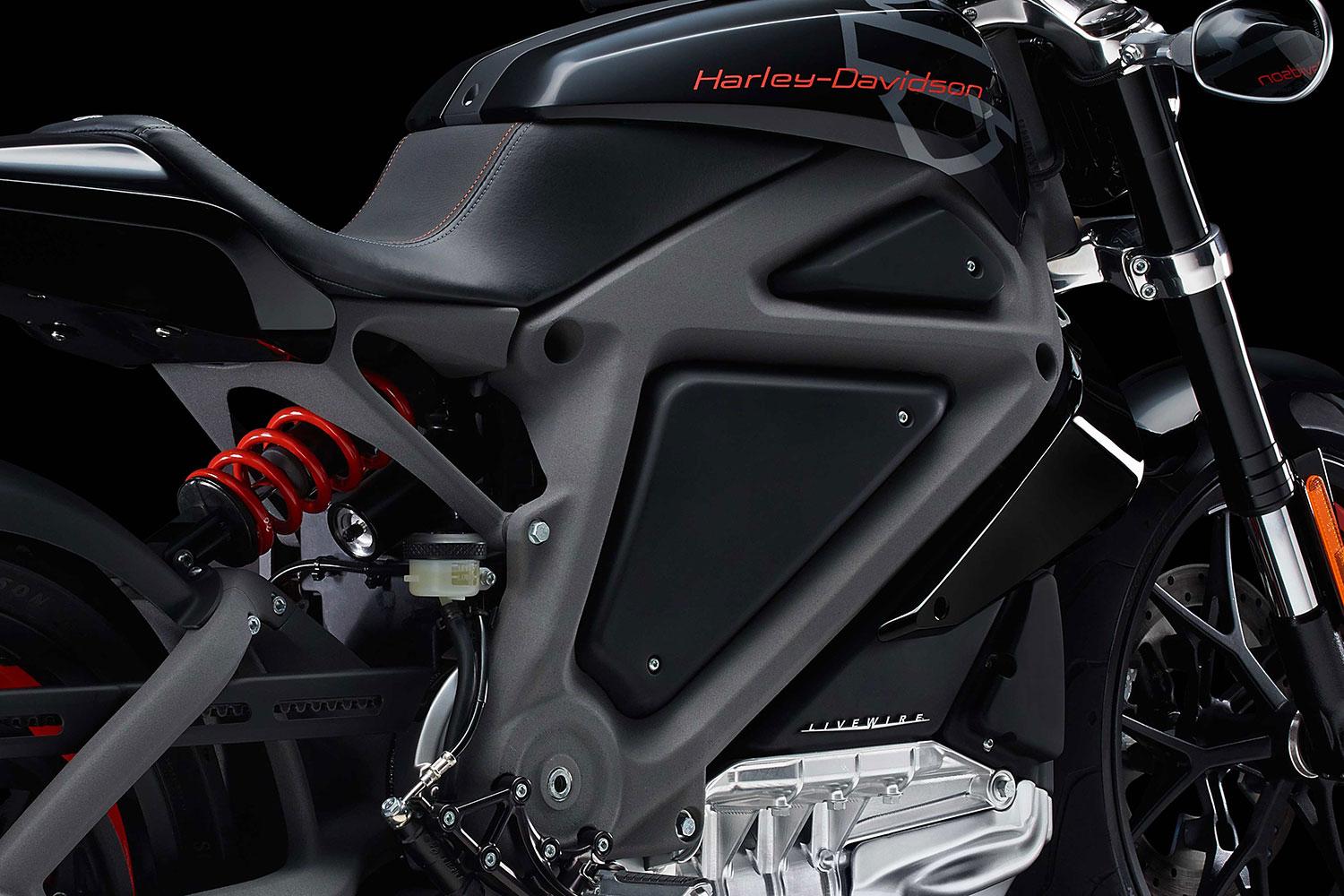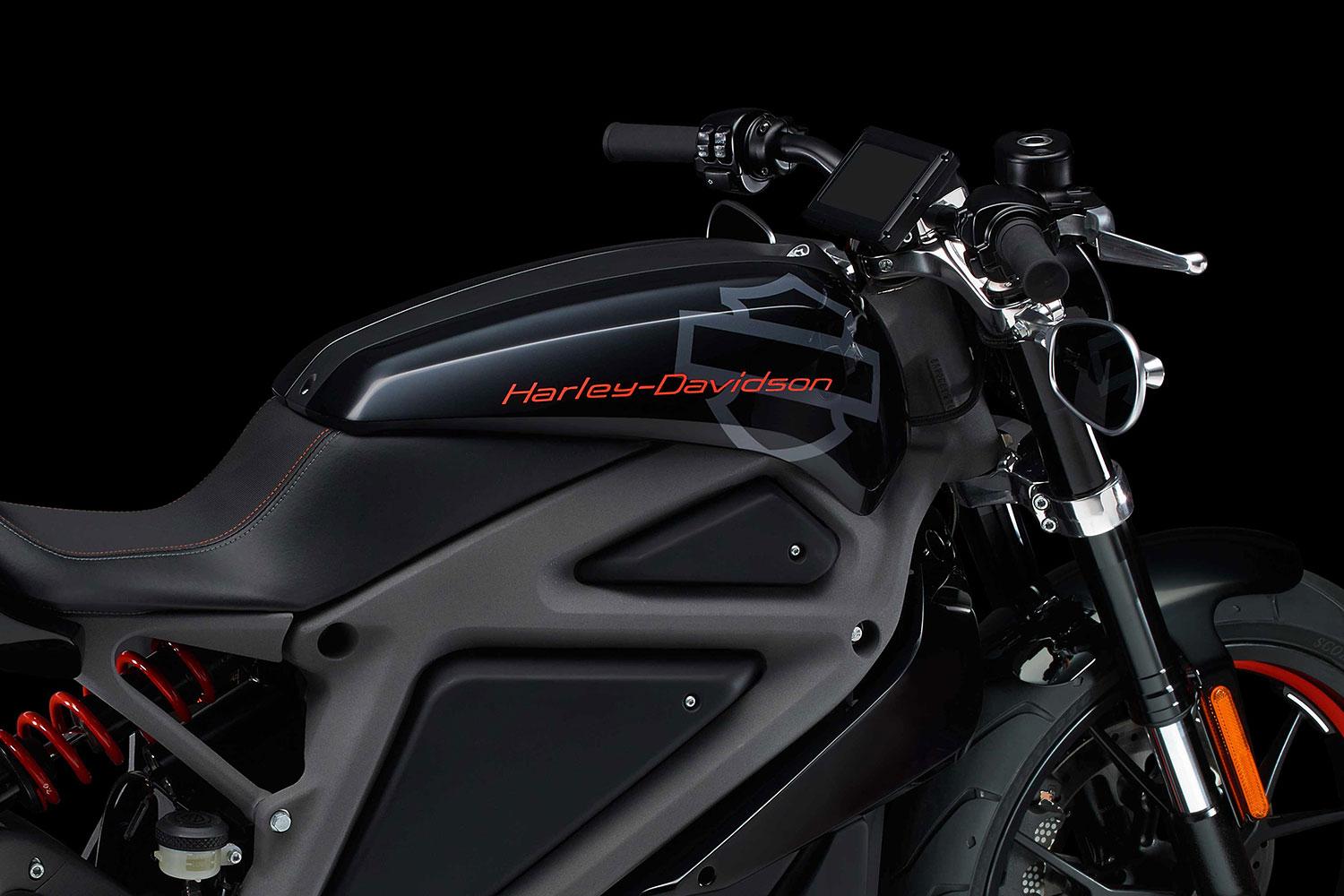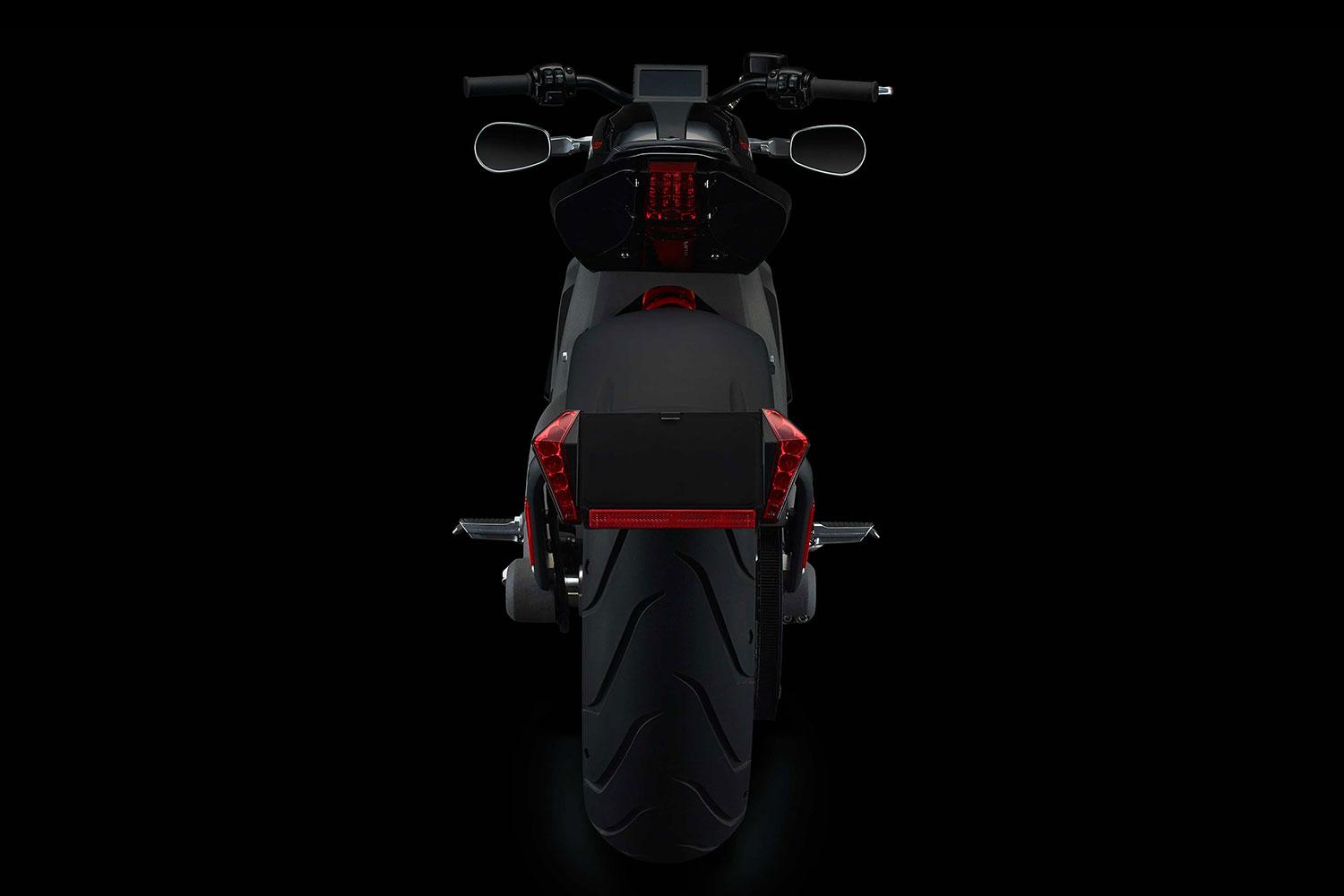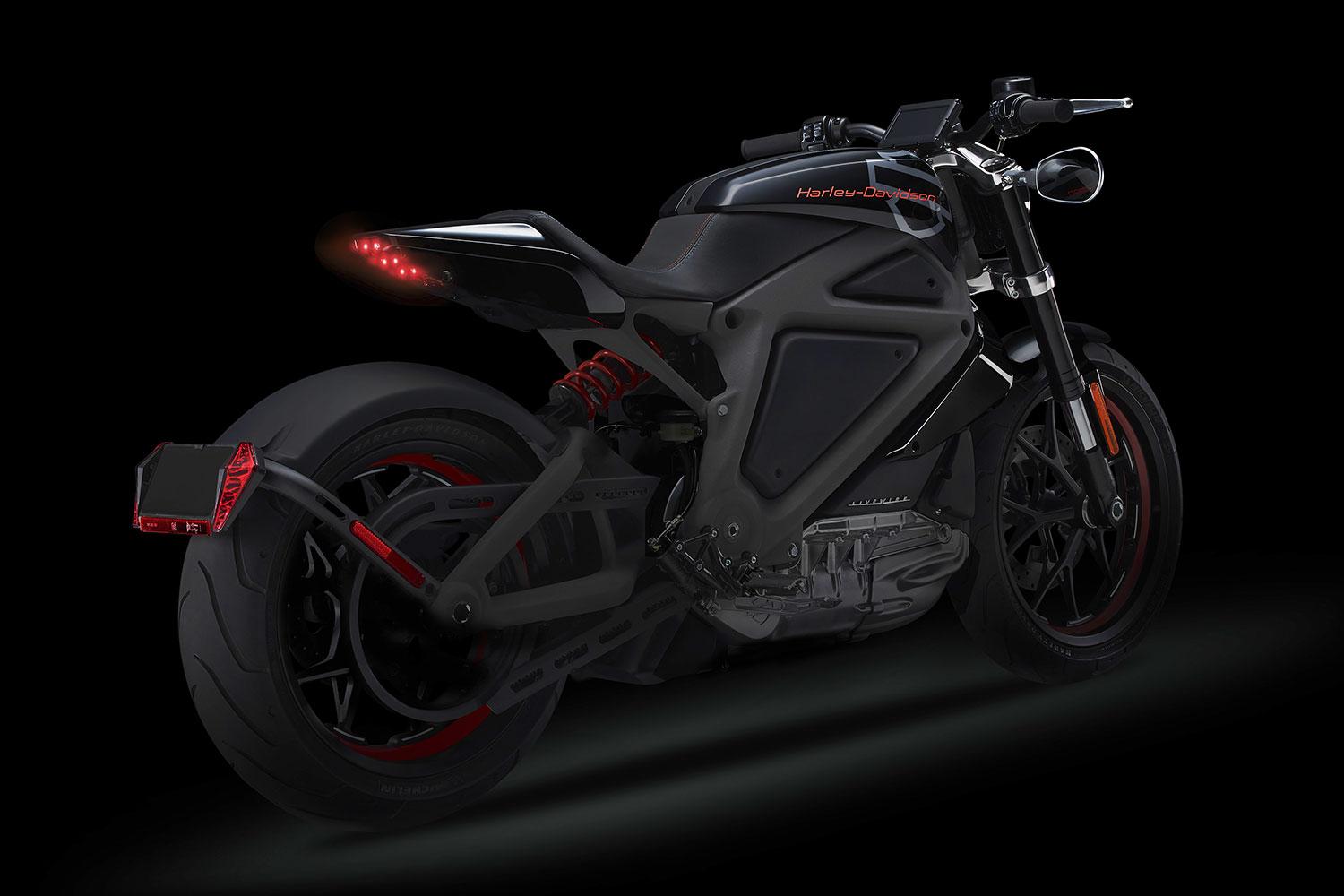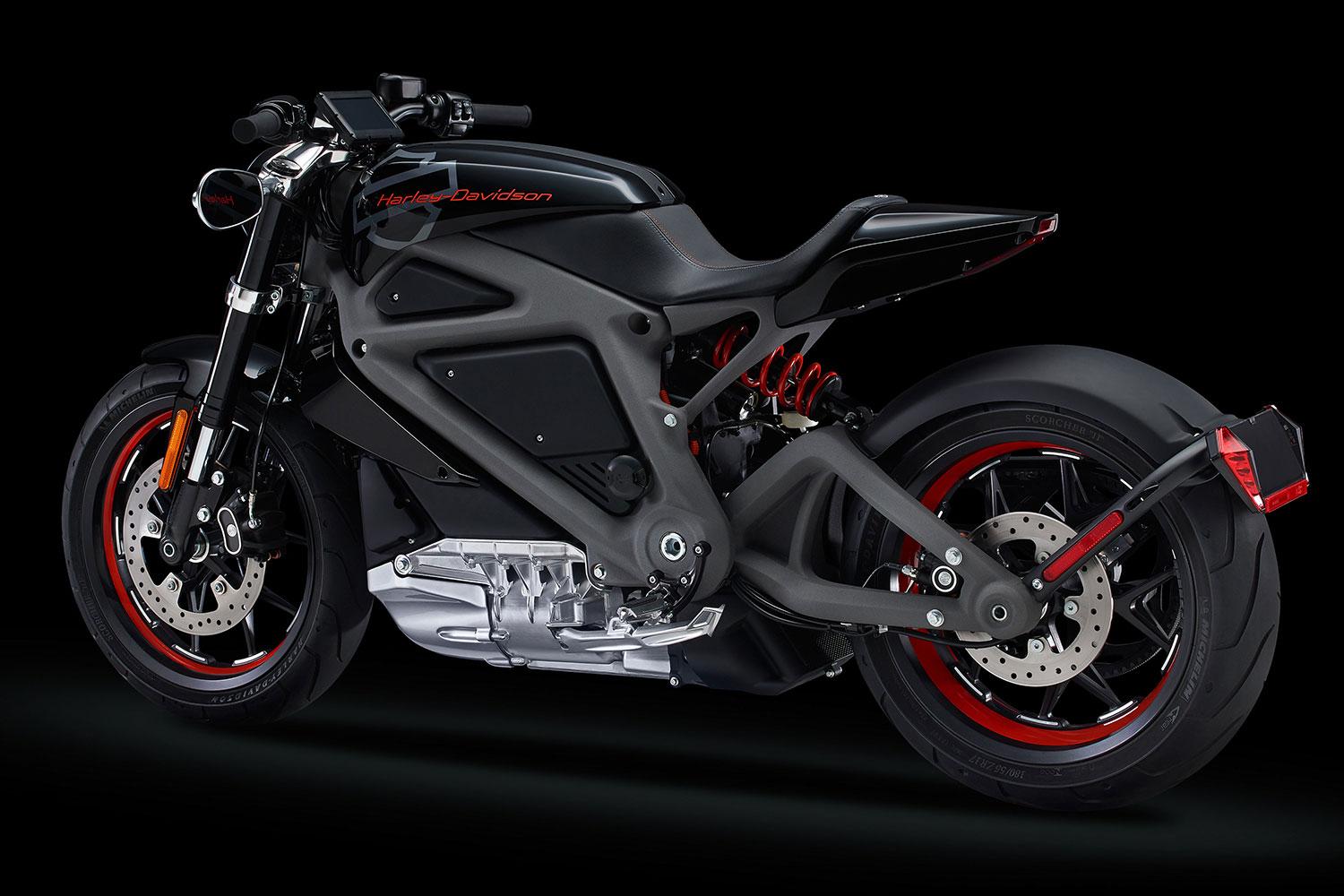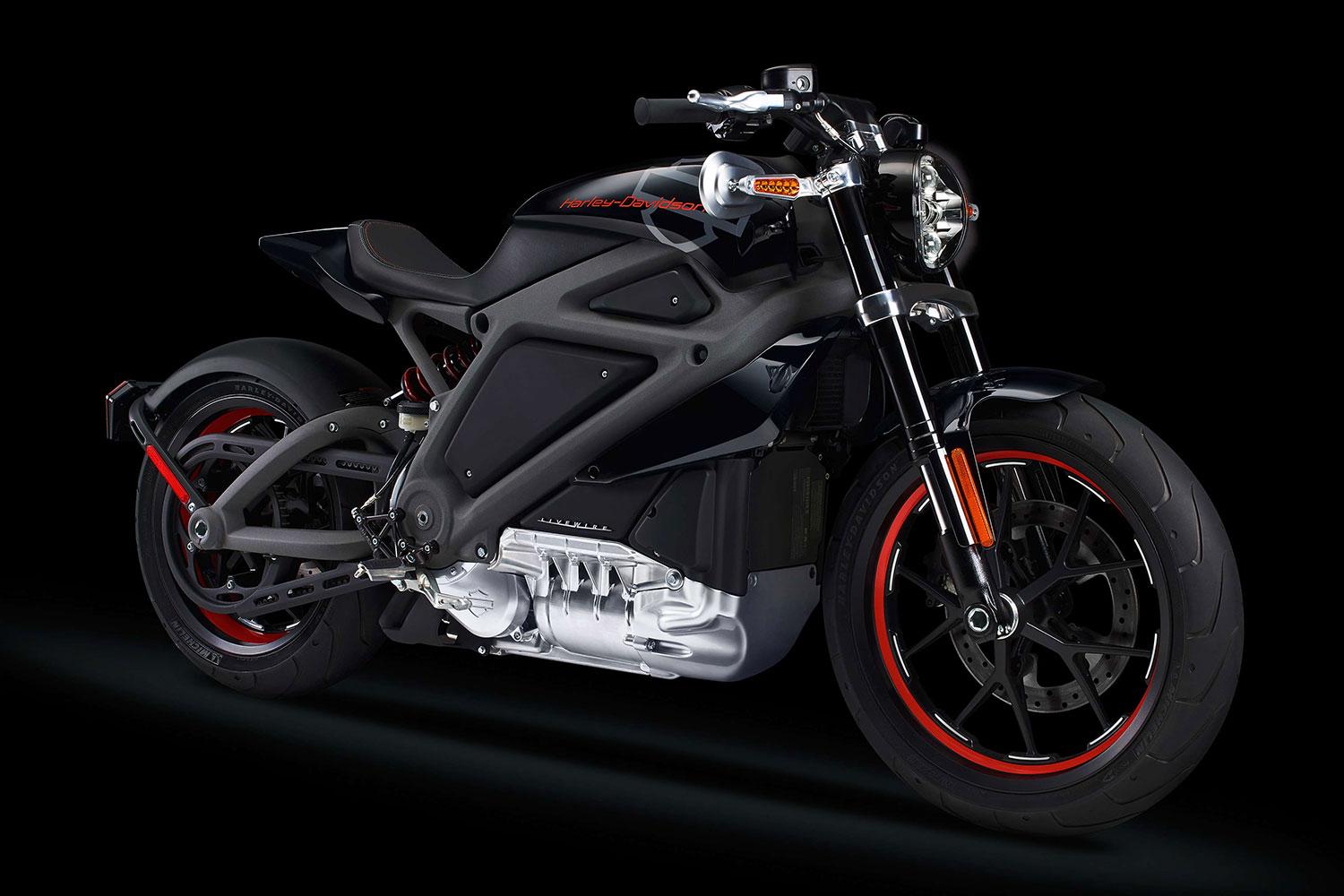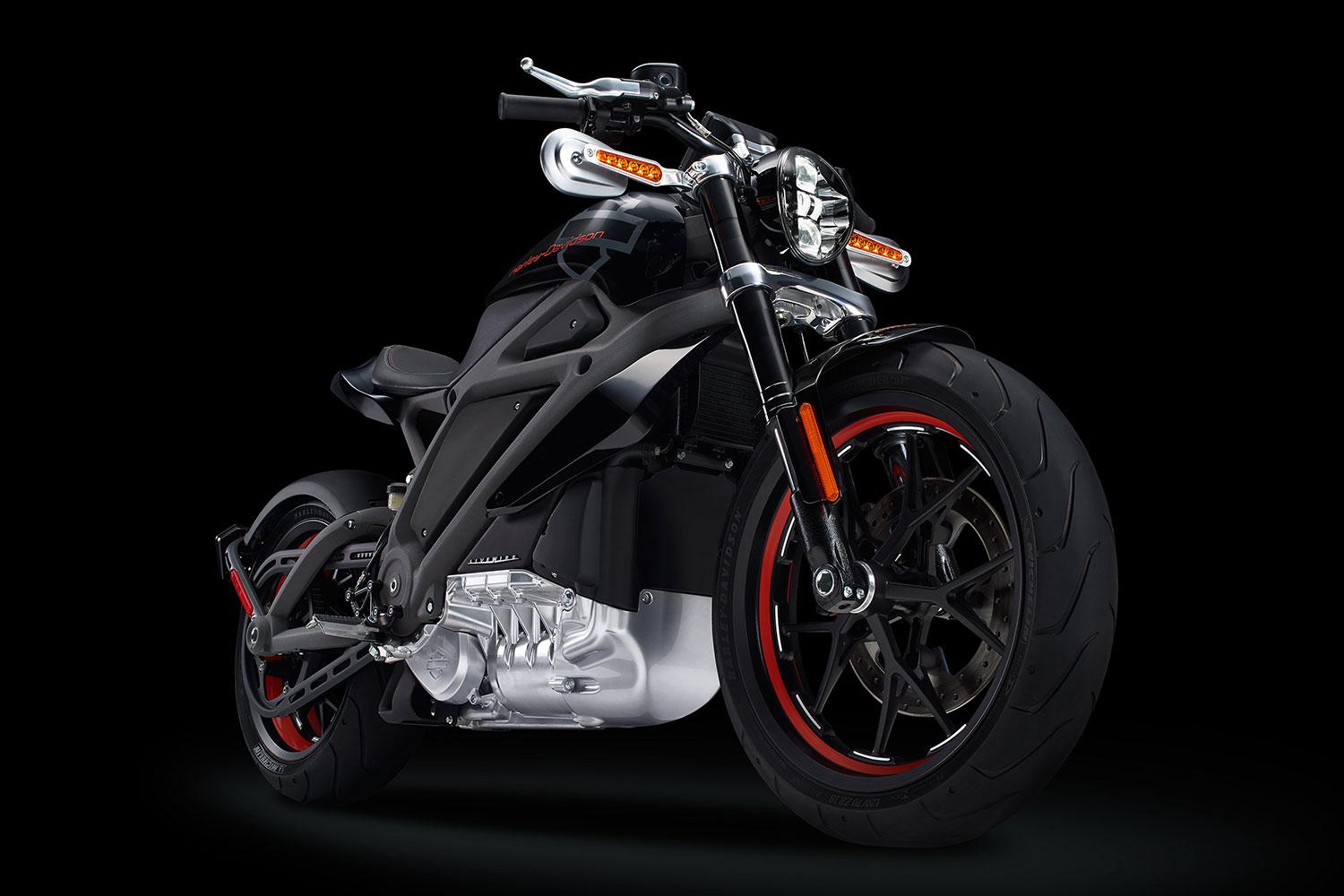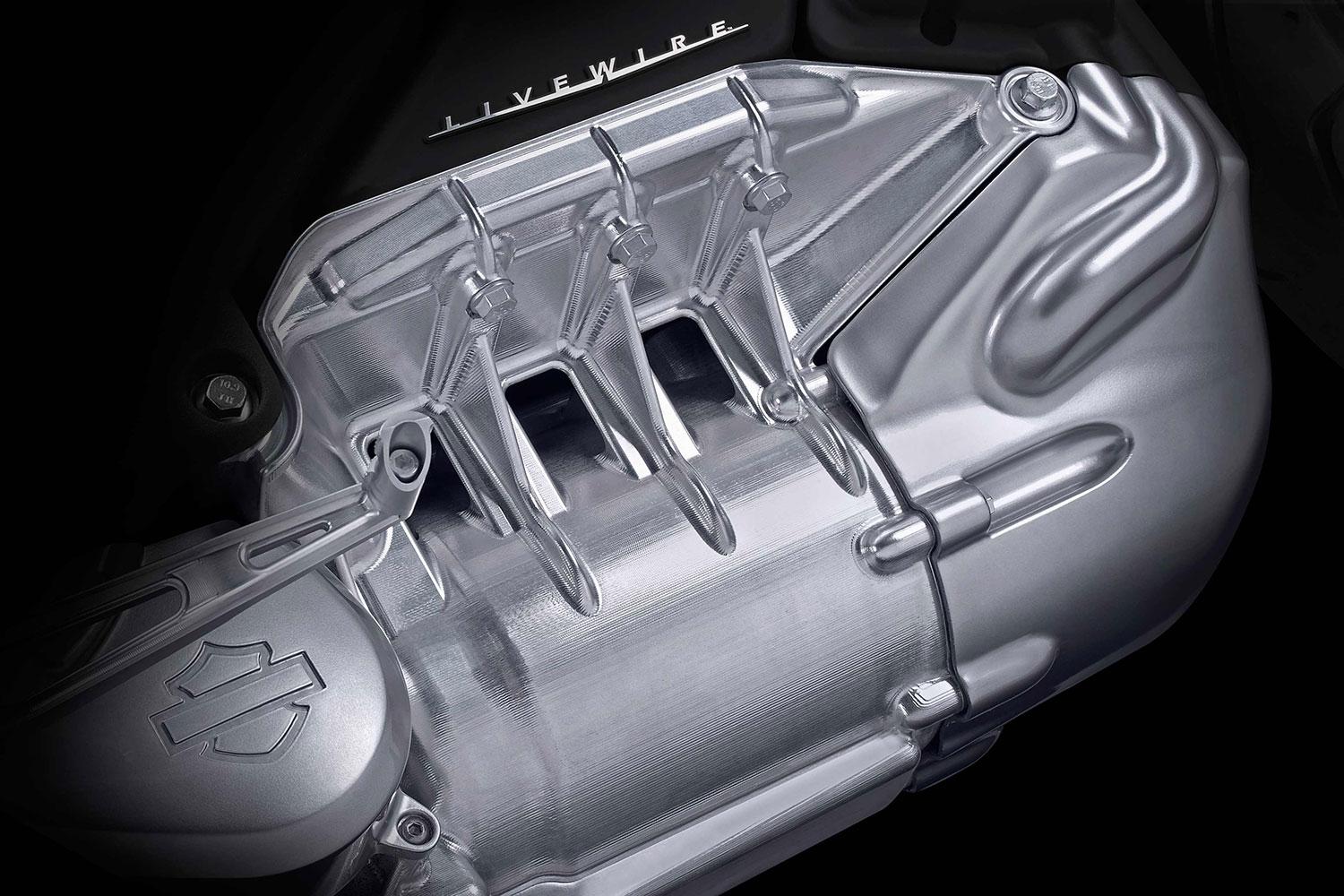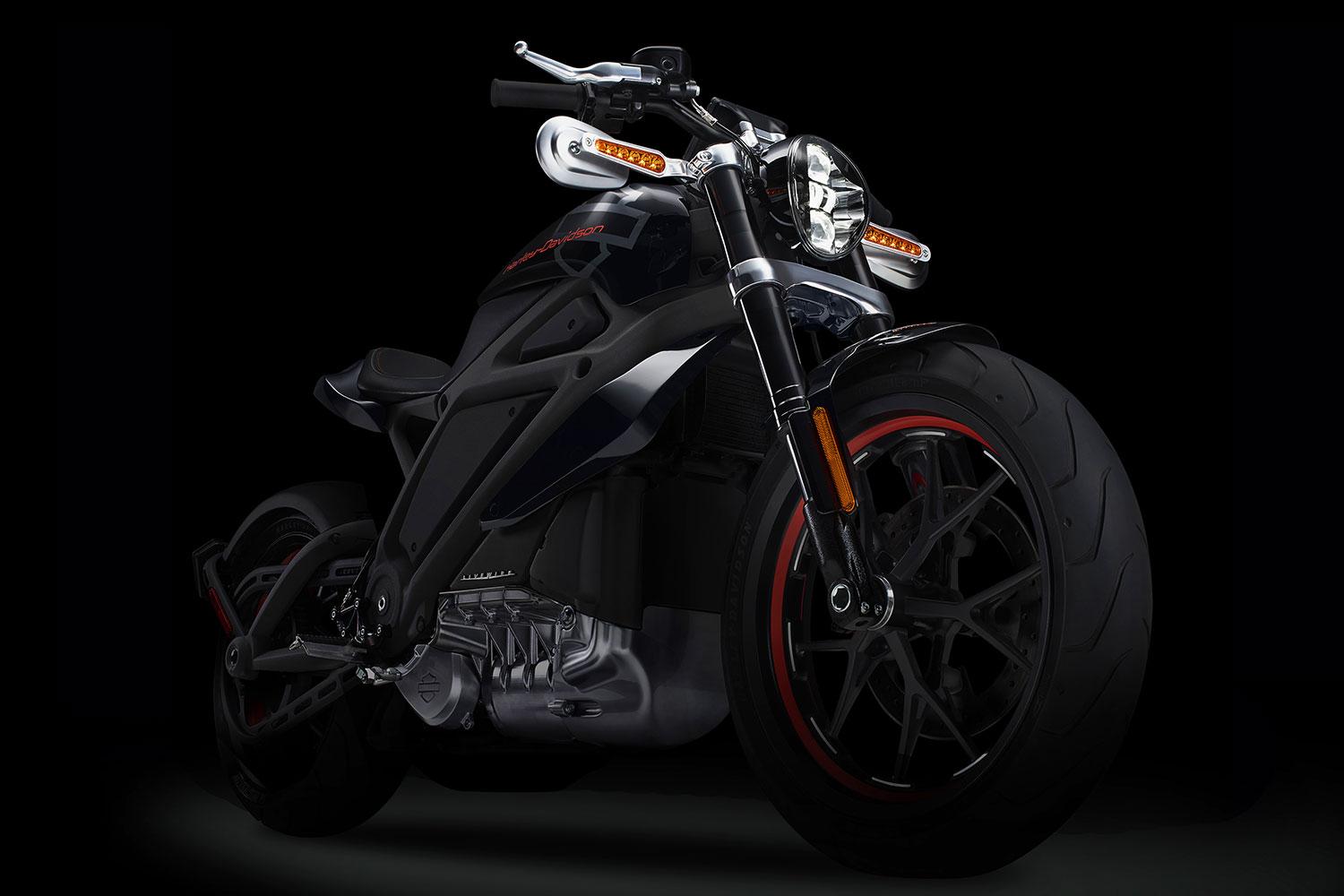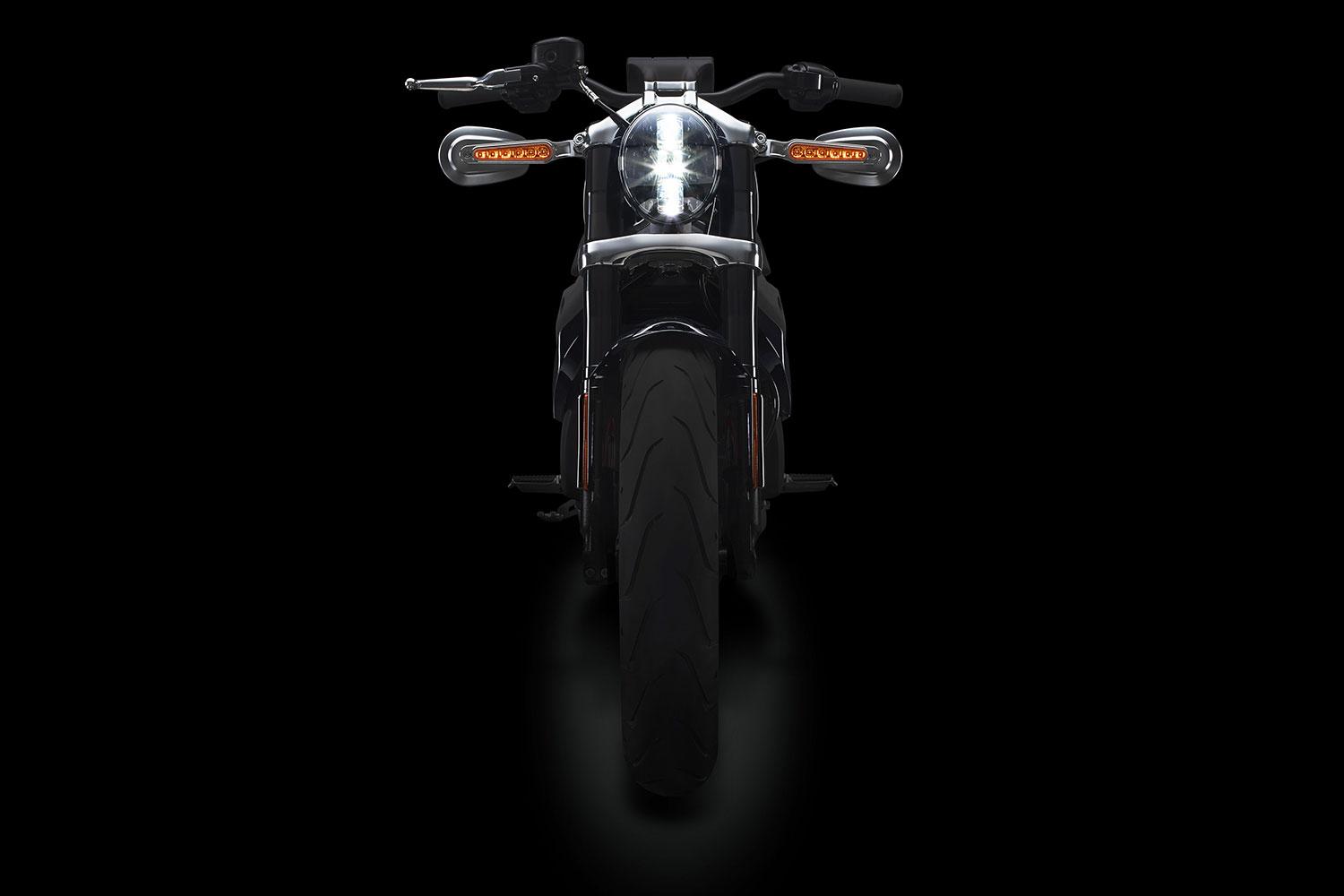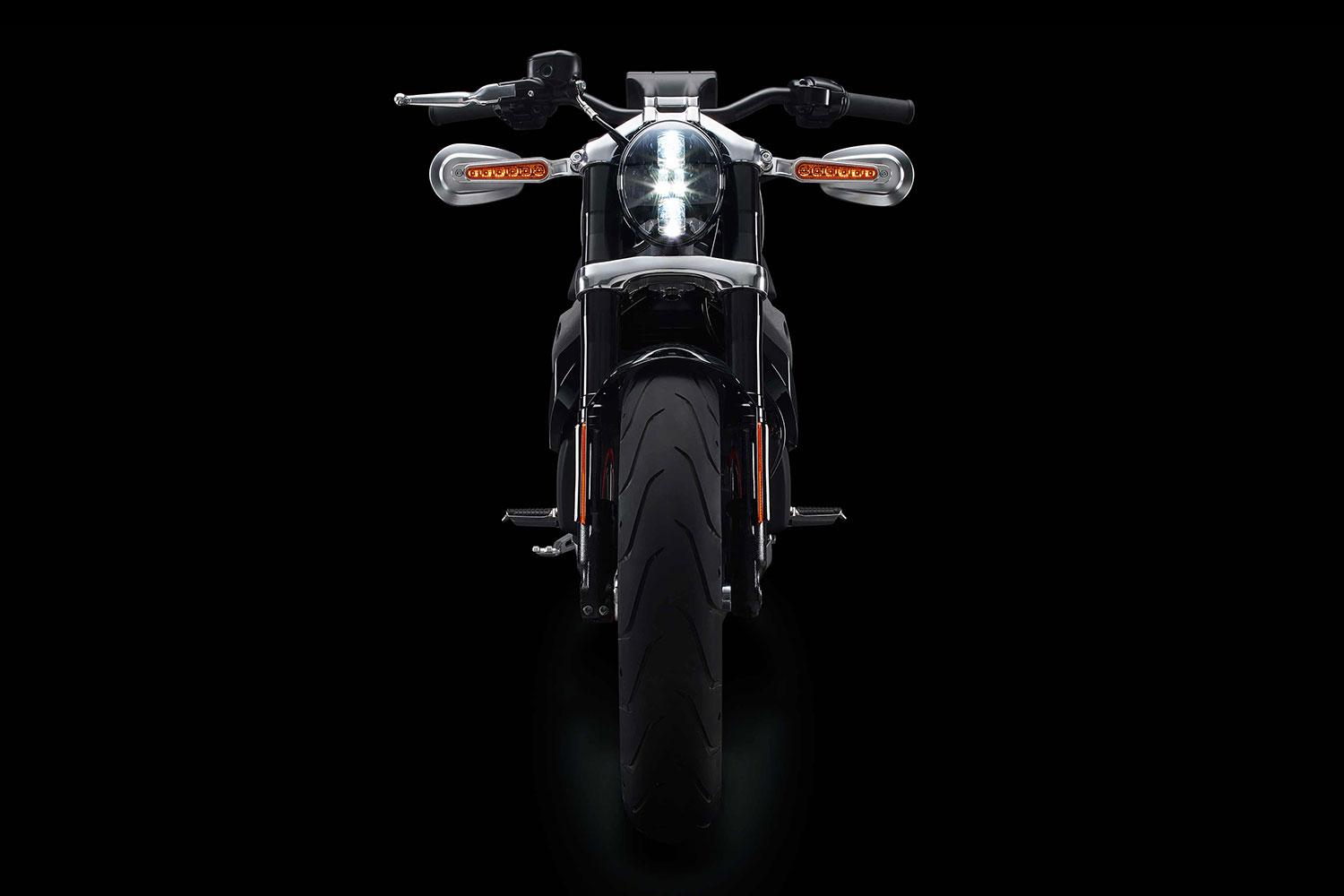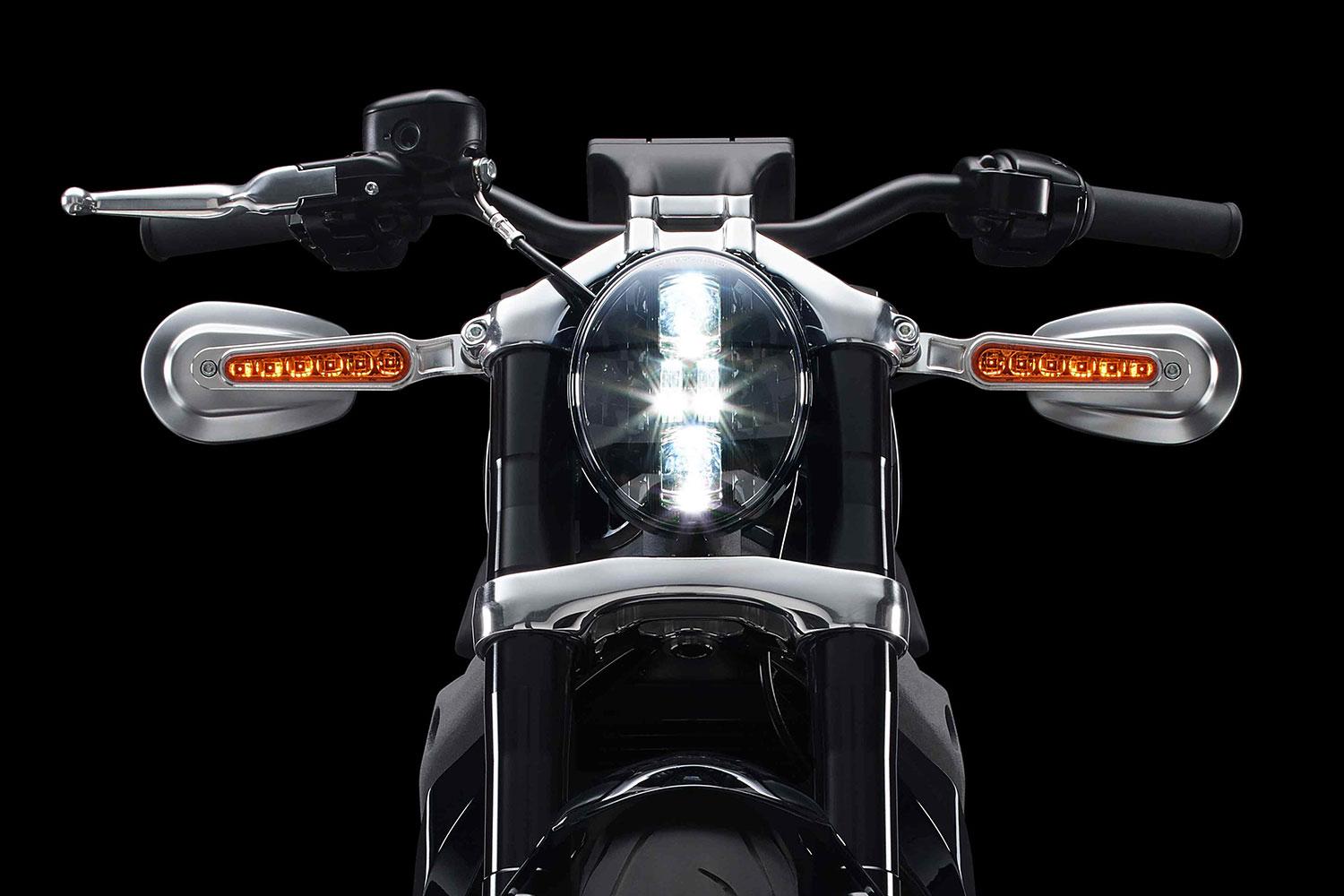
While specific details of the promised electric motorcycle are under wraps, we can look to Harley’s LiveWire electric motorcycle concept (pictured up top and below) for hints. Harley-Davidson took the LiveWire on tour in 2014 to gather customer reaction. Last year Harley announced a 2021 launch for its first electric motorcycle, but this week’s announcement moves up the schedule.
The LiveWire concept on tour in 2014 had what appeared to be an aluminum frame, adjustable rear monoshock suspension, and reversed front forks. The riding position and appearance were similar to current naked sports bikes. With a reported 50-mile range per charge and estimates of 74 pound-feet of torque and 74 horsepower from a 10kWh battery and a longitudinally oriented motor, the LiveWire could be suitable for bar runs and short commutes, but inconvenient for longer rides.
We have no inside info on this (we’re trying) but we find it hard to imagine the final release, 2020 production bike will have more than a 100-mile range. Perhaps a base model will have a short range with optional add-on battery modules for increased distance, which is how Zero offers its electric motorcycle lineup.
The following images of the LiveWire concept are not production bike shots. We don’t even know what Harley will call its first electric bike, although LiveWire will do just fine in our opinion. It is likely, however, that when Harley launches the real deal in mid-2019 that some of LiveWire’s components and overall style will carry over.
Harley-Davidson announces its new model year lineup in the summer. Last summer’s 2018 lineup announcement irked some with the demise of the rougher-ride Dyna line. The new Harleys pleased many, though, including subsequent reviewers, with an expanded and re-designed Softtail family that added several orphaned Dyna models on improved chassis and suspensions for better ride, handling, and performance.
If you jump ahead 18 months to summer 2019, the announced timeline for the first electric motorcycle, that means when Harley introduces its new 2020 model year motorcycles the lineup will include the first model of this new electric line. It’s possible the electric model will be announced, shown, and officially launched in the summer along with the other bikes, but have a delayed production launch, maybe into the 2020 calendar year. However, if Harley sees electric motorcycles as the way to build sales outside a diminishing market, the pressure will be on for the bike to hit the ground with both wheels under new owners with the rest of its 2020 models.
The electric motorcycle news may have softened the blow for investors who read the H-D fourth quarter and full-year 2017 financial results. It’s no secret the motorcycle industry is slipping worldwide. Compared to 2016, Harley-Davidson’s retail motorcycle sales dropped 8.5 percent in the U.S., 3.9 percent internationally, and 6.7 percent overall.
To be clear, Harley-Davidson is making money and returned a net income of roughly $520 million on almost $5 billion in sales in 2017. Stock dividends even went up from 2016. But sales are down and an electric motorcycle is a proactive move to increase business.
Harley isn’t alone in seeing its business fade as millennials and other riders younger than H-D’s traditional customer mix show little interest in motorcycles. Harley-Davidson is a leader among motorcycle companies reaching out to younger markets to build its customer base.
Last week’s Harley-Davidson Snow Hill Climb, the last event of the Aspen 2018 X Games, is just one example of the company’s efforts to find new riders. According to the company press release, Harley gained 32,000 new riders in 2017 and trained more than 62,000 riders in its branded Riding Academy. Electric motorcycles aren’t a guaranteed solution to sliding sales but combined with other tech developments such as Honda’s work with self-balancing technology, increased safety, and smaller carbon footprints might attract a new crowd.
